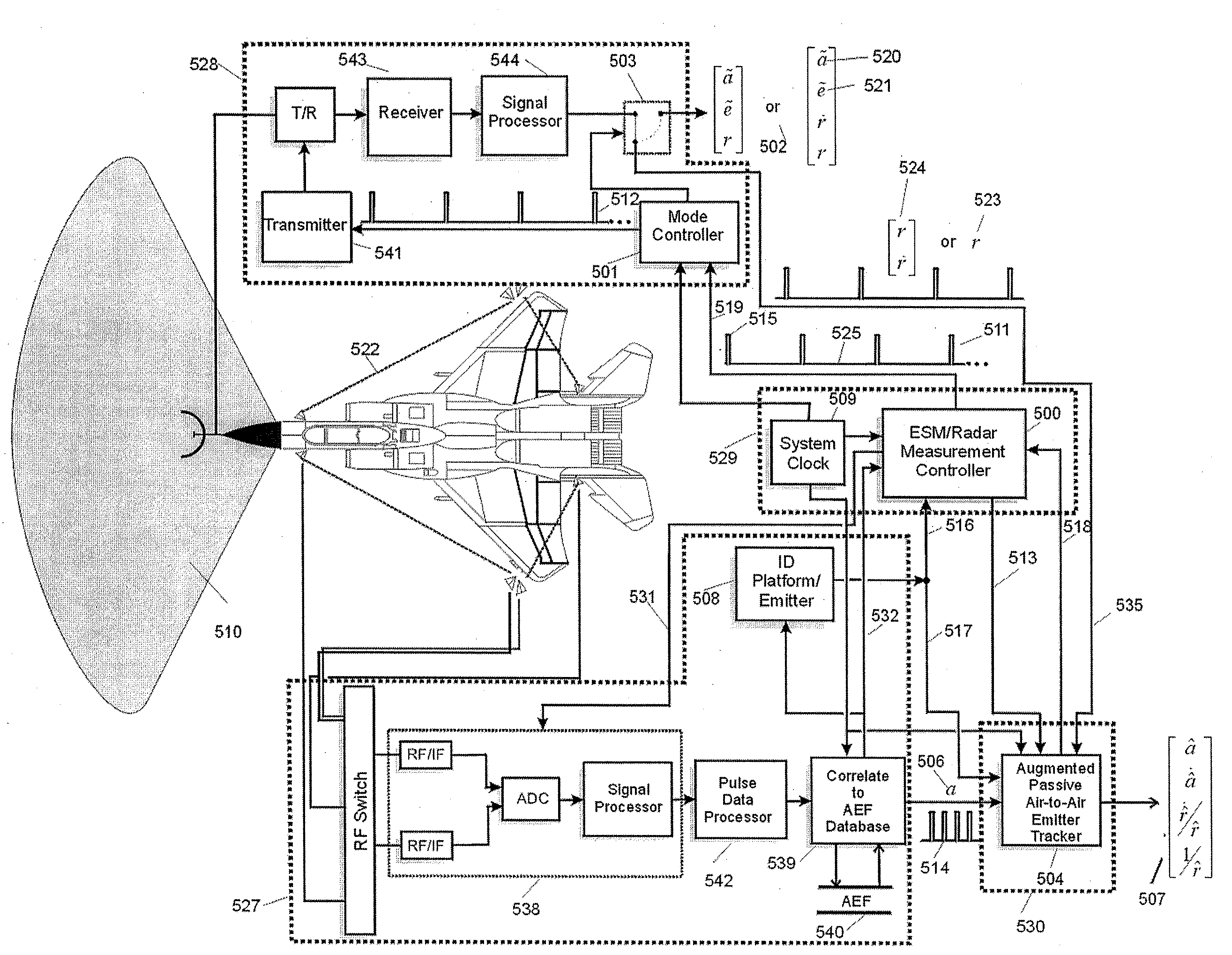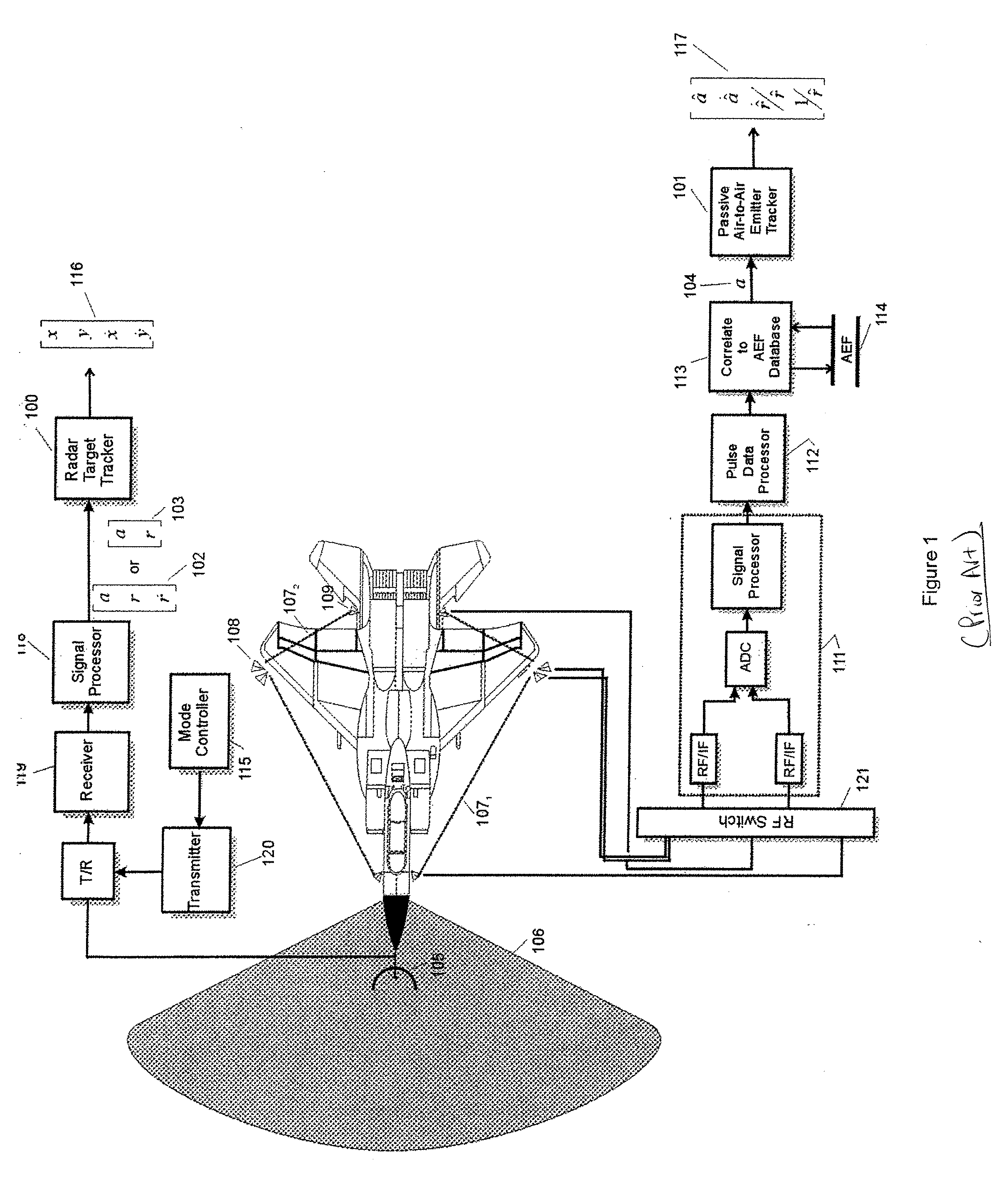Augmented passive tracking of a moving emitter
a passive tracking and emitter technology, applied in direction finders, instruments, communication jamming, etc., can solve the problems of preventing the subsequent convergence of the true target track, the failure of bearing-only estimators to initialize correctly, and the inability to uniquely associate the sequence of bearing measurements
- Summary
- Abstract
- Description
- Claims
- Application Information
AI Technical Summary
Benefits of technology
Problems solved by technology
Method used
Image
Examples
example 1
[0075]The following experimental results show performance improvement periodic augmented measurements achieved over strictly bearings only passive tracking in the Northrop Grumman Corporation flight test shown in FIG. 2. Both the ESM and radar systems shown in FIG. 1 were essentially implemented on aircraft 200, a BAC 1-11, and data from both systems were collected. Radar measurements 102 (FIG. 1) and ESM azimuth measurements 104 (FIG. 1) were saved with time tags utilizing a system clock similar to system clock 509 (FIG. 5). The measurements were subsequently processed using the method of this disclosure. Specifically, Controller 500 (FIG. 5) requested a fixed augmented measurement update rate of about 0.059 Hz, or every 17 seconds. The core ESM tracking filter implemented in Tracker 504 was the adaptive filter described in the '703 application. Using the bearings-only data this estimator generated FIG. 3 and FIG. 4 results previously discussed, with an azimuth 506 update rate of 1...
PUM
 Login to View More
Login to View More Abstract
Description
Claims
Application Information
 Login to View More
Login to View More - R&D
- Intellectual Property
- Life Sciences
- Materials
- Tech Scout
- Unparalleled Data Quality
- Higher Quality Content
- 60% Fewer Hallucinations
Browse by: Latest US Patents, China's latest patents, Technical Efficacy Thesaurus, Application Domain, Technology Topic, Popular Technical Reports.
© 2025 PatSnap. All rights reserved.Legal|Privacy policy|Modern Slavery Act Transparency Statement|Sitemap|About US| Contact US: help@patsnap.com



